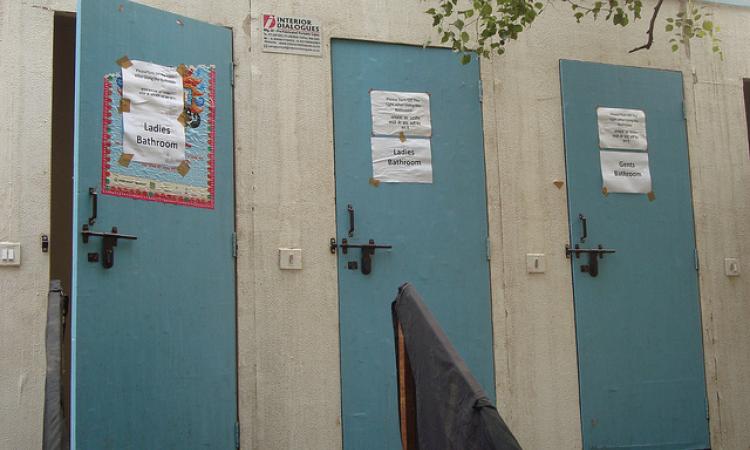
India's rural sanitation programme- Total Sanitation Campaign (TSC) was started in 1999, with a goal of eradicating open defecation. Renamed to Nirmal Bharat Abhiyan (NBA) in April 2012, the focus and approach of this programme was supposed to undergo a paradigm shift. Rather than emphasizing only on the construction of toilets, it was to emphasize on changing cultural norms to reduce and eventually prevent open defecation in rural areas.
Census 2011 findings show that only 30.7% of rural households have access to toilets. A report by UNICEF and WHO suggests that a mere 21% of rural India used improved sanitation facilities in 2008, than in earlier years. Realising the importance of the issue, the Government of India decided to increase its spending on this programme by 425% from Rs. 6540 crore in the 11th Five Year Plan, to Rs. 34,377 crore in the 12th Five Year Plan.
The status of sanitation data in India
To understand how the Abhiyan was faring, the Accountability Initiative took up a study titled 'From outlays to outcomes: Understanding the status of rural sanitation data', the report of which was published earlier this year. Through a detailed analysis of the Government of India's (GoI) planning and budgeting documents, as well as an analysis of the online monitoring system already in place, the report tried to identify some of the challenges that the Abhiyan faced and how it could overcome them.
It raised the following important questions:
- How far is the current governance architecture designed to enable this shift towards outcomes?
- Can this shift be built through the current model of planning and financing? If not, what must the alternative system be?
- How do we align plans and finances?
These questions were asked to help understand if the programme was equipped to somewhat accurately measure an outcomes-based approach rather than an output-based approach. The former measures how many toilets are being used while the latter stops at how many toilets are built.
Data collection and discrepancies
The problems with data collection were many. There were issues with determining the accuracy of the reported data with increased government verification and checks. There also wasn't any real time monitoring and assessment to ensure that the standards were maintained. 13.8% of households continued to defecate in the open even though they belonged to a Panchayat that was awarded under the Nirmal Gram Puraskar (1). Due to discrepancies like this, the Census 2011 reported that only close to 31% of rural households had access to sanitation facilities, while the Abhiyan's own achievement stood close to 80%.
Poor quality data and budget allocations
Since the basis for planning and budgeting was the collected data, the amount of money being set aside wasn't based on the actual needs on the ground. The focus was still on the input parameters, which was the construction of sanitation facilities, rather than on ways to get more people to use the facilities.
To address these issues, the Abhiyan conducted a Baseline Survey 2012 to assess the current status of sanitation facilities including parameters such as functional and defunct toilets but it still did not contain any data on usage. So the Abhiyan was still left without being able to plan better.
How can the Abhiyan improve?
For budget allocations to be planned better, the Abhiyan needs good quality data. It needs to implement ways to measure the usage of the toilets. Once it does that, it needs to have the flexibility to plan how it uses the money allocated to it on the actual problems that are faced locally and on the ground.
A big part of any awareness campaign is the focus on Information, Education and Communication (IEC). The report noted that the money set aside for these activities was under-spent. The Abhiyan also wasn't receiving its funds from the GoI, its main source of funding, in a timely manner.
Unless the issues noted above are addressed, it will take longer than we hope to create a 'Nirmal Bharat'.
Download the study and factsheets:
- From outlays to outcomes - The state of rural sanitation data in India - A report by Accountability Initiative and Arghyam (2013)
- Rural sanitation fact sheets for all states of India
Accountability Initiative, Centre for Policy Research carried out this research, with support from Arghyam.
Learn more about Arghyam's work on the State of Sanitation in India.
References:
1. The Nirmal Gram Puraskar (NGP), is an award-based incentive scheme for fully sanitized and open defecation-free Gram Panchayats. It measured usage of sanitation facilities to some extent. If a Gram Panchayat was awarded under the Puraskar, it was supposed to mean that all members of that particular Panchayat were using a sanitation facility.
/articles/how-do-rural-indias-toilets-measure-0